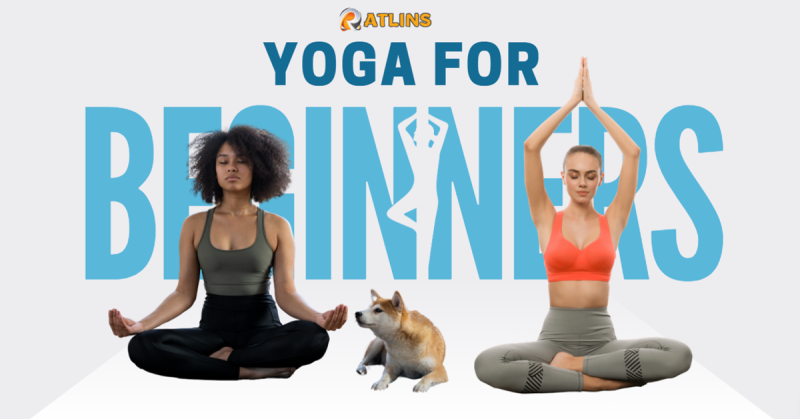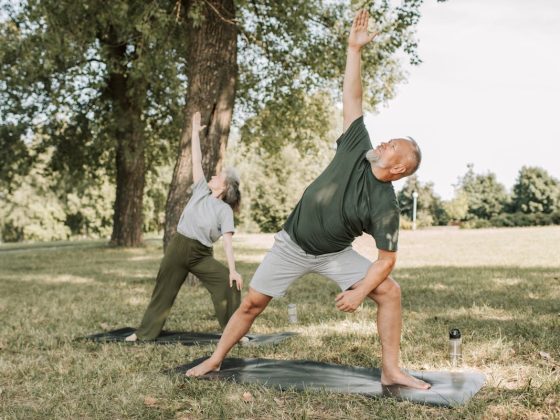Yoga is a practice that has been around for thousands of years, but it is more than just physical poses and stretching. It also includes meditation, breathing, and other practices that can improve your well-being and health. Whether you are looking for a way to increase your flexibility, relieve stress, enhance your mental health, or simply try something new, yoga can offer you many benefits. In this article, we will explain what Yoga for beginners, why you should try it, what the benefits are, and how to get started.
Yoga for beginners, why you should try?
The word “yoga” comes from the root word “yuj,” which means “to yoke” or “to bind.” The word itself has numerous meanings, from an astrological conjunction to matrimony, with the underlying theme being connection. Yoga is a practice that aims to connect the body, mind, and spirit, as well as the individual and the universal.
Yoga has many styles, branches, and schools, each with its own emphasis and approach. Some of the most popular ones are:
- Hatha yoga: This is the most common type of yoga in the West, and it focuses on the physical postures (asanas) and breathing techniques (pranayama). Hatha yoga can be gentle or vigorous, depending on the level and preference of the practitioner.
- Vinyasa yoga: This is a dynamic and flowing style of yoga that links the breath with the movement. Vinyasa yoga often involves sequences of poses that vary from class to class, such as sun salutations, warrior poses, and balancing poses.
- Bikram yoga: This is a type of hot yoga that consists of 26 poses and two breathing exercises performed in a heated room (around 105°F or 40°C). Bikram yoga is designed to detoxify the body, improve flexibility, and build strength and endurance.
- Ashtanga yoga: This is a rigorous and disciplined style of yoga that follows a fixed sequence of poses, each one linked by a breath and a movement. Ashtanga yoga has six series of increasing difficulty, and the practitioner must master each one before moving on to the next.
- Iyengar yoga: This is a precise and alignment-based style of yoga that uses props, such as blocks, straps, bolsters, and chairs, to help the practitioner achieve the correct posture and avoid injury. Iyengar yoga is suitable for beginners and people with physical limitations, as it allows for modifications and adjustments.
- Yin yoga: This is a slow and meditative style of yoga that targets the deep connective tissues, such as the ligaments, tendons, and fascia. Yin yoga involves holding poses for several minutes, which can help release tension, increase circulation, and promote relaxation.
Reasons to try Yoga for beginners
There are many reasons why you should try yoga, depending on your goals and interests. Here are some of the most common ones:
- You want to improve your physical health. Yoga can help you improve your flexibility, strength, balance, posture, and cardiovascular functioning. It can also help you prevent or manage chronic conditions, such as back pain, arthritis, heart disease, and diabetes.
- You want to reduce your stress and anxiety. Yoga can help you calm your mind, relax your body, and cope with negative emotions. It can also help you enhance your mood, self-esteem, and happiness. Yoga can be a great tool for stress relief and mental health.
- You want to learn something new and have fun. Yoga can be a fun and enjoyable activity that can challenge you and keep you motivated. You can explore different styles, poses, and levels of yoga and find the ones that suit you best. You can also join a yoga community and meet new people who share your passion.
- You want to connect with yourself and the world. Yoga can help you cultivate awareness, mindfulness, and compassion. It can also help you discover your true self, your purpose, and your potential. Yoga can be a spiritual practice that can connect you with the divine, nature, and humanity.
What are the benefits of yoga?
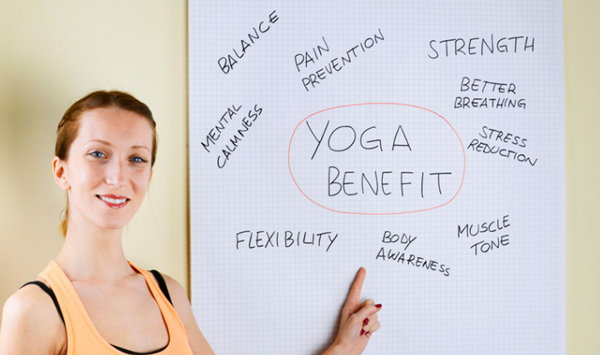
Yoga has many benefits that are supported by scientific research. Here are some of the most notable ones:
Yoga improves flexibility.
Flexibility is an important component of physical health, and yoga can help you increase it. Yoga offers many poses that can stretch and lengthen your muscles, joints, and spine. A 2016 survey found that the most frequently frequently cited reason people selected yoga was to increase flexibility. Yoga can also help you prevent or reduce stiffness, pain, and injury.
Yoga helps with back pain relief.
Back pain is a common problem that affects many people, and yoga can be an effective way to ease it. Yoga can help you strengthen your core, improve your posture, and release tension in your back. A 2017 study found that yoga was as good as basic stretching for easing pain and improving mobility in people with lower back pain. The American College of Physicians recommends yoga as a first-line treatment for chronic low back pain.
Yoga can ease arthritis symptoms.
Arthritis is a condition that causes inflammation and pain in the joints, and yoga can help you manage it. Yoga can help you improve your range of motion, reduce swelling, and enhance your quality of life. A 2019 review of 11 studies found that gentle yoga eased pain, stiffness, and fatigue in people with different types of arthritis.
Yoga lowers blood pressure.
High blood pressure is a risk factor for heart disease, stroke, and kidney damage, and yoga can help you lower it. Yoga can help you relax, regulate your nervous system, and improve your blood flow. A 2019 meta-analysis of 49 studies found that yoga significantly reduced systolic and diastolic blood pressure in people with hypertension.
Yoga boosts immunity.
Your immune system is your body’s defense against infections and diseases, and yoga can help you boost it. Yoga can help you reduce stress, which can impair your immunity. Yoga can also help you stimulate your lymphatic system, which can flush out toxins and enhance your immunity. A 2018 review of 15 studies found that yoga had positive effects on immune function and inflammation.
Yoga improves brain function.
Your brain is the center of your cognition, memory, and emotions, and yoga can help you improve it. Yoga can help you increase your brain volume, connectivity, and activity. Yoga can also help you enhance your attention, concentration, and learning. A 2015 review of 11 studies found that yoga improved various aspects of cognitive function, such as executive function, memory, and processing speed.
Yoga fosters happiness.
Happiness is a state of mind that reflects your satisfaction and well-being, and yoga can help you foster it. Yoga can help you release endorphins, which are natural chemicals that make you feel good. Yoga can also help you cultivate gratitude, compassion, and joy. A 2017 study found that yoga increased happiness and positive affect in healthy adults.
Yoga for beginners
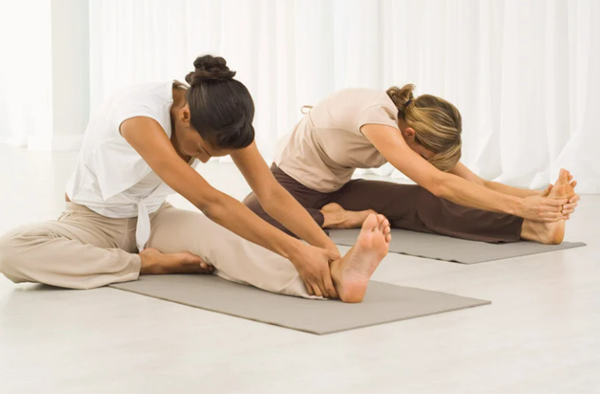
If you are interested in trying yoga, here are some tips to help you get started:
Find a suitable style and level.
As mentioned earlier, there are many types of yoga, and each one has its own characteristics and benefits. You can do some research online or ask a yoga teacher to find out which style and level suit you best. You can also try different styles and levels until you find your favorite one.
Choose a comfortable place and time.
You can practice yoga anywhere, as long as you have enough space and a flat surface. You can practice yoga at home, in a studio, in a park, or even in your office. You can also practice yoga at any time of the day, depending on your schedule and preference. Some people prefer to practice yoga in the morning to energize their day, while others prefer to practice yoga in the evening to unwind and relax.
Get the necessary equipment.
You don’t need much equipment to practice yoga, but there are some items that can make your experience more comfortable and safe. The most essential item is a yoga mat, which can provide you with cushioning and grip. You can also use props, such as blocks, straps, bolsters, and chairs, to help you modify or deepen the poses. You can also wear comfortable and breathable clothing that allows you to move freely.
Follow a qualified instructor.
If you are a beginner, it is advisable to follow a qualified instructor who can guide you through the poses, correct your alignment, and answer your questions. You can find a yoga instructor in your local studio, online, or through an app. You can also watch videos or read books to learn more about yoga, but make sure they are from reputable sources.
Listen to your body and respect your limits.
Yoga is not a competition, and you don’t have to force yourself to do something that feels uncomfortable or painful. Yoga is a personal practice, and you should listen to your body and respect your limits. You can modify or skip any pose that doesn’t suit you, and you can take breaks whenever you need them. You can also use your breath as a guide and breathe deeply and smoothly throughout the practice.
Be consistent and patient:
Yoga is a journey, not a destination, and you will see the benefits gradually over time. You don’t have to practice yoga every day, but you should be consistent and patient. You can start with a few minutes a day, and gradually increase the duration and intensity of your practice. You can also set realistic and specific goals, and track your progress and achievements.
All you need is a willingness to try
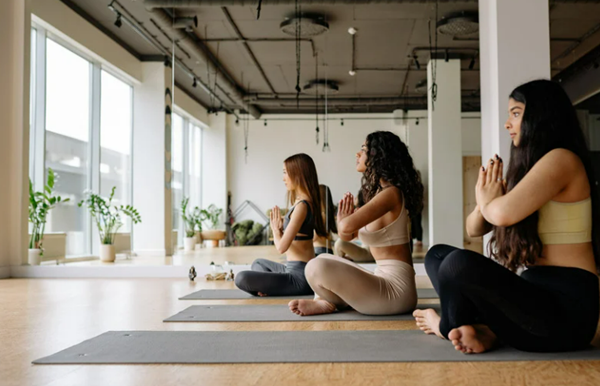
Yoga for beginners is a practice that can offer you many benefits for your body, mind, and spirit. It can help you improve your physical health, reduce your stress and anxiety, learn something new and have fun, and connect with yourself and the world. Yoga is also accessible and adaptable to anyone, regardless of age, gender, or background. All you need is a willingness to try and a curiosity to explore. If you are interested in yoga, we hope this article has given you some useful information and tips to start your journey. Namaste!
